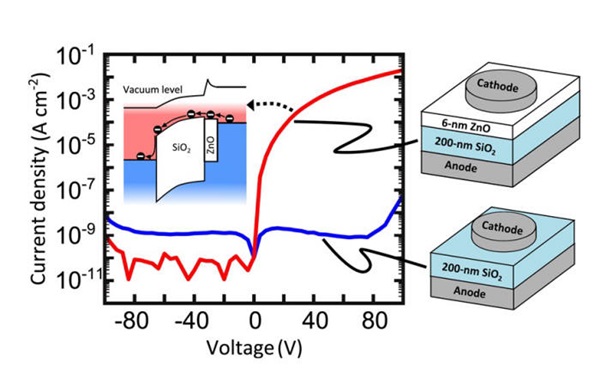Korean research team was able to develop ultra-thin film diode material that can be applied on electronic components including transparent display and memory. It is expected that it will greatly contribute to transparent electronic element industry since its process is easy and its production cost is cheap.
Advanced Institute of Convergence Technology (AICT) announced on the 20th that research team led by Professor Kim Yeon Sang of environmental-friendly cell technology research center along with Professors Park Yong Seop and Kim Young Dong of Kyunghee University was able to develop material and device technology that can formulate transparent diode element by using heterostructure of SiO2 and ZnO.
P-N diode was used until recently to develop transparent thin-film diode, but it is currently facing difficulty because the development of P-type oxide semiconductor is difficult. Although two-dimensional semiconductor material that is comprised of chalcogenide compound is being developed, its precise control technique was incomplete that it led to too many problems for it to be commercialized.

On the other hand, this newly developed technology made production of transparent thin-film diode possible by heterostructure of SiO2 and ZnO. Research team was able to examine that electricity flows in certain ways if ZnO ultra-thin film is inserted in between SiO2 and cathode. This showed that production of transparent diode was possible by using variety of SiO2.
This developed element’s structure is very simple, and it is easy to control it. It is comprised of metal anode, SiO2, ZnO, and metal cathode, and SiO2 and ZnO’s thicknesses can be controlled up to 20~200 nm. It can also hold back rectification of electricity that is caused by SiO2’s thickness. Not only that, it can be cheap and easy to make since it uses materials and processes that are already commercialized.
Research result was published on ‘Nature Communications’, which is a sister-journal to worldly known scientific journal ‘Nature’. Research team also applied for many original patents.
“This is a very important finding in securing original technology of transparent thin-film diode, and it will have ripple effects industrially and financially since it is a research result of original material and element structure. It can be extensively used on transparent electronic element field, which is projected to be worth about 30 billion dollar industry in 2020.” Professor Kim Yeon Sang explained about the importance of developing transparent thin-film diode.
Senior Reporter Kim, Soonki | soonkkim@etnews.com